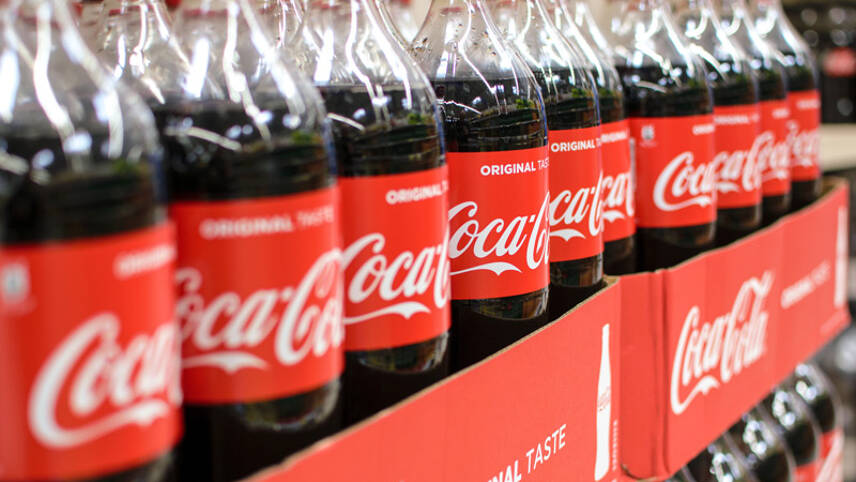Register for free and continue reading
Join our growing army of changemakers and get unlimited access to our premium content

Member company Coca-Cola increased its plastic year-on-year, but decreased its plastic intensity
The initiative was set up in 2019 with the aim of helping corporates measure their plastic footprint and, then, develop and implement specific actions to reach long-term, large-scale ambitions to cut single-use plastic production and distribution. Businesses from various parts of the plastics value chain are signed up.
At present, the initiative’s members are The Coca-Cola Company, Starbucks, Keurig Dr Pepper, McDonald’s, Procter & Gamble (P&G), Colgate Palmolive, Kimberly-Clark, CVS Health and Amcor.
The initiative’s latest progress report reveals that the businesses collectively reported 7.2 million metric tonnes of plastic use in 2021. Of the members, Coca-Cola and Amcor were the biggest plastic users, accounting collectively for 78% of this total.
This represents a 5.3% increase in total plastic tonnage reported year-on-year. WWF claims that this increase can be partly attributed to a rebound in product sales as Covid-19 lockdown restrictions lifted. The report notes that six of the eight companies participating in ReSource: Plastic are reducing their plastics intensity – i.e. their tonnage has declined relative to net sales. McDonald’s and Starbucks both saw increases in their plastics intensity.
This raises some concerns about whether ReSource: Plastic members are striving to meet the initiative’s ambitions on eliminating unnecessary plastics and doubling global recycling and composting rates.
However, the report does reveal some progress. It confirms that the amount of PVC, polystyrene and components too small to recycle being produced by initiative participants is decreasing. In 2018, these packaging formats made up 3.2% of the aggregate portfolio of ReSource: Plastic members. In 2021, the proportion was 1%.
WWF estimates that 43% of the plastic produced by the eight businesses is sent to landfill, with a further 9% being incinerated and 15% mismanaged. This leaves a recycling rate of 34%.
This is higher than the global estimated plastic recycling rate. However, WWF notes in the report that PET bottles, which are labelled as recyclable at kerbside in many markets, account for 65% of the Resource portfolio but only 17% of the global plastic packaging market. In other words, rigid plastics are over-represented in the initiative and more challenging formats to recycle, like flexible plastics, are under-represented.
The report notes that waste management pathway data is being improved, including data based on region-specific contexts. This lays the foundation for the development of packaging solutions which can be recycled in the context of different policy landscapes and in areas where waste management infrastructure differs.
Spotlight on reuse
Overall, the report concludes, there is more work to be done to reduce and redesign packaging to eliminate items which are likely to be incinerated, landfilled or mismanaged. It also states that reuse “remains a key opportunity and should be pursued as a high-priority action now through 2030”.
On reuse, the report details how several of the businesses piloted reuse schemes last year. These schemes must now be scaled. Pilots have included Starbucks’ Borrow-A-Cup and CupShare programmes, which have led the coffee chain to work to discontinue single-use cups in the South Korean market in 2025. Elsewhere, Coca-Cola and P&G participated in TerraCycle’s ‘Loop’ programme and CVS health trialled a bag rental system in California.
Reuse and refill have been more challenging to scale than recyclable packaging formats. In 2020, the Ellen MacArthur Foundation stated that just 2% of the products sold by the world’s biggest consumer goods firms that year came in reusable packaging.
Summarising the findings of the new WWF Resource: Plastic report, the initiative’s lead Erin Simon said: “Members are taking their plastic waste footprint seriously and being transparent about how they are working to address it. Measurement and data sharing are critical first steps. The next, more challenging step is ramping up the pace of progress.
“There is a path forward. This will be difficult but it’s still very possible to meet our goals. The investments we’re seeing beyond the supply chain are a good example of the ambition I want to see in all areas, and they will continue to accelerate the systems change we need to solve the global plastics crisis.”


Please login or Register to leave a comment.